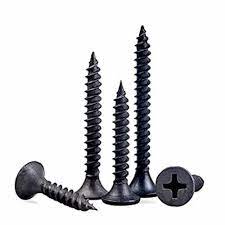Troubleshooting Issues with Custom Drywall Anchors That Won't Screw In
Dealing with Custom Drywall Anchors That Won't Screw In
When embarking on home improvement projects, often one of the most overlooked yet critical components is choosing the right anchoring system for drywall. Drywall anchors play a vital role in ensuring that your fixtures, shelves, and appliances are securely fastened to the walls. However, there are instances where custom drywall anchors simply refuse to screw in properly, leading to frustration and delays. This article will explore the reasons behind this issue and provide practical solutions.
Understanding Drywall Anchors
First, it’s essential to understand what drywall anchors are and their purpose. These anchors provide a means to hang objects on drywall that would otherwise not support their weight. They come in various types, including expansion anchors, toggle bolts, and self-drilling anchors, each designed for specific applications and weight capacities. Custom drywall anchors are often utilized for specific projects or unique wall conditions, which can sometimes lead to compatibility issues.
Common Reasons for Installation Failures
1. Incorrect Anchor Size One of the most common problems is using an anchor that is not suited for the weight of the object being hung or the type of drywall. If the anchor is too large, it may not fit into the pre-drilled hole correctly; if it’s too small, it could simply pull out. Always check the packaging for weight ratings and select accordingly.
2. Damaged Drywall If the drywall is old or has been previously subjected to moisture, it may be too brittle or crumbly to hold an anchor. Check for signs of damage before attempting to install an anchor. If the drywall is compromised, consider replacing the section where you intend to install the anchor.
3. Improper Drilling Technique Using the wrong drill bit or not drilling to the correct depth can lead to problems when inserting anchors. For instance, when using a self-drilling anchor, ensure that the drill bit matches the size recommended by the anchor manufacturer and drill straight into the drywall. If the bit is too thick, it will create a hole that is too large for the anchor.
4. Resistance During Insertion If you encounter resistance when trying to screw in the anchor, resist the urge to force it. Instead, remove the anchor and inspect the hole. The hole may need to be re-drilled or potentially filled and redrilled, especially if it has become too large from previous attempts.
custom drywall anchor won't screw in

5. Compatibility Issues Custom anchors may not always be compatible with all drywall types. If you're using a particular brand or style for the first time, consult the manufacturer’s instructions or their customer service for guidance.
Solutions and Alternatives
When faced with a stubborn drywall anchor, consider the following solutions
- Use a Different Type of Anchor If your custom anchor isn’t working, there are numerous other anchor types available
. Toggle bolts are excellent for heavy items, while molly bolts provide extra support.- Repair the Drywall If the drywall is damaged, it might be prudent to patch or replace it before attempting to install an anchor. Patching the drywall can provide a fresh, stable base for the anchor.
- Hollow Wall Anchors When working with hollow walls, consider using hollow wall anchors specifically designed for this purpose. They distribute the weight more evenly and provide a secure hold.
- Seek Professional Help If you continue to struggle, it might be beneficial to consult a professional. A handyman or contractor can evaluate the situation on-site and recommend effective solutions.
Conclusion
In summary, dealing with custom drywall anchors that won't screw in can be a common yet frustrating problem. By understanding the root causes and employing the right techniques, you can efficiently overcome these obstacles and successfully complete your home improvement projects. Always remember to choose the right anchor for your specific needs and invest the time to ensure your installations are solid and secure.
-
Top Choices for Plasterboard FixingNewsDec.26,2024
-
The Versatility of Specialty WashersNewsDec.26,2024
-
Secure Your ProjectsNewsDec.26,2024
-
Essential Screws for Chipboard Flooring ProjectsNewsDec.26,2024
-
Choosing the Right Drywall ScrewsNewsDec.26,2024
-
Black Phosphate Screws for Superior PerformanceNewsDec.26,2024
-
The Versatile Choice of Nylon Flat Washers for Your NeedsNewsDec.18,2024










